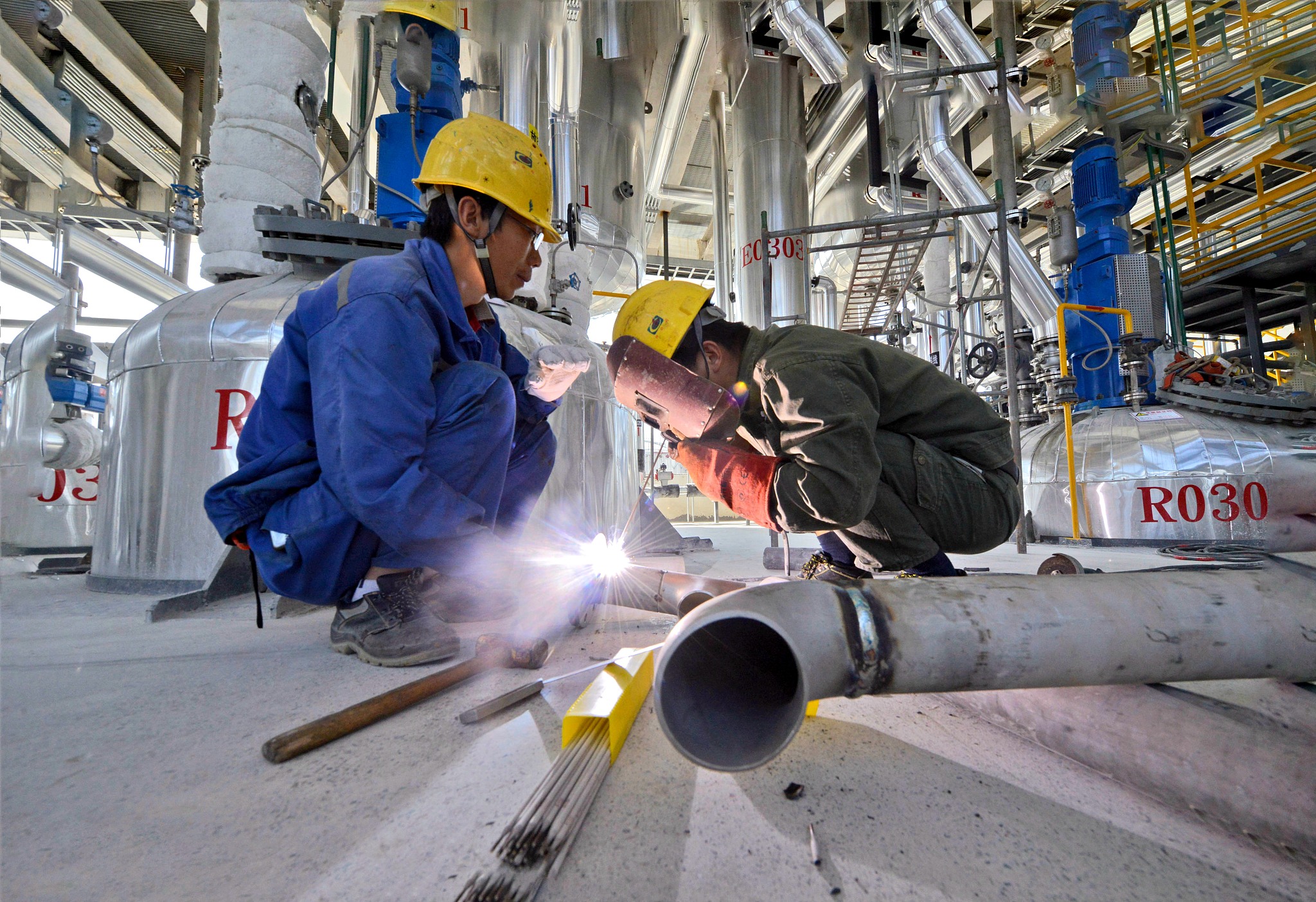
Editor's note: Daryl Guppy is an international financial technical analysis expert. He has provided weekly Shanghai Index analysis for Chinese mainland media for more than a decade. Guppy appears regularly on CNBC Asia and is known as "The Chart Man." He is a national board member of the Australia China Business Council. The article reflects the author's opinions and not necessarily the views of CGTN.
China has a "problem" that many countries would dearly love to have. How China solves that problem will have an impact on other economies.
China's problem is inflation associated with a booming economic recovery post-COVID. The economic growth is due to the effective control of COVID-19 and stimulus programs designed to assist Chinese businesses in recovering.
This is very different from the stimulus that was applied in 2008 to assist in the recovery from the Global Financial Crisis with China capital flowing outward. That stimulus also had the effect of lifting world economies out of the disaster precipitated by the U.S. market collapse. China's current response is increasing capital flows into China.
China's response to COVID-19 recovery is captured in the "dual circulation" economic policy. It is designed to strengthen the Chinese domestic economy and to reduce dependence on external economic forces and markets as a driver of the economy. Western countries call this economic sovereignty and like China, use this approach to reduce the dependency on external supply chains.
For international markets, this China policy has two impacts. First is the potential reduction in the momentum of physical exports to China. Second, is to make China an even more attractive location for international capital investment because of its market growth.
Inflation is greatly desired by stagnating Western economies because it is associated with economic growth. In April, China's producer price index rose 6.8 percent year-on-year compared to 4.4 percent growth recorded in March.
Tackling this inflationary growth is becoming a significant feature in policy decisions. China's National Development and Reform Commission (NDRC) has put commodity speculation in its sights. The NDRC has threatened to crack down on domestic traders and firms involved in speculation, collusion or hoarding of commodities in a "zero tolerance" campaign. Currently, this policy is directed particularly toward the iron ore, steel, copper and aluminium sectors with industry leaders called-in for discussions.
The NDRC indicated regulators would strengthen the joint supervision of commodity futures and the spot market, where there would be "zero tolerance" for illegal activities. It would also increase market supervision with inspections and investigations of abnormal transactions.
Although these measures are currently aimed at hard commodities, this is also a warning to those working with soft commodities, including grain, soy, pork, and beef. China is exploring a number of longer-term solutions to reduce the dependency on commodity imports, but these will take many years before they become effective.

The hard commodity complex – iron ore, copper and other metals – is overheating as shown by dramatic increases in prices. How China deals with this is an issue that is beginning to concern investors in these resource areas.
This growing and inflationary economy is an attractive destination of foreign capital and business despite growing political pressure for business to disengage from China. In his 100 days address to the Congress, U.S. President Joe Biden urged U.S. firms to leave China and "re-shore" to America. However, there is little evidence that "re-shoring' is happening. Surveys of American firms in China repeatedly find that the vast majority are expanding their footprint in China. Very few are returning production to the U.S. because they do not want to miss out on China's lucrative domestic market.
The demand for Chinese goods also remains steady. U.S. trade data recorded a slight decline of 3.6 percent in imports from China despite new American tariffs of 25 percent. Clearly, Americans still want Chinese electronic products, medical equipment, protective gear and other products. The disruptions were anticipated to fall most heavily on companies like Walmart which relied on cheaper Chinese imports to sustain their business model. In truth, the disruptions were minimal.
Foreign capital is being deployed to China in response to regulatory action taken by the United States in particular. China Telecom, China Mobile and others have been forced to delist from U.S. stock exchanges. The specific consequence of interest to investors outside of the U.S. is the way these listings have moved to Shanghai and Hong Kong. The relocation of these globally competitive businesses brings with it a reallocation of capital and new investment opportunities. It has a generally bullish impact on the Hong Kong, Shanghai and Shenzhen Stock Exchanges as hosting markets.
This rising tide of inflowing capital will also lift all other China investment opportunities as these exchanges grow and further attract global listings.
Growth feeds on itself, so expanding indexes attract more international funds into ETFs and managed fund allocations. In short, this relocation is bullish for these markets, and investors may choose to position themselves in anticipation of this shift in capital.
In 2008, China exported growth opportunities to global markets. In the 2021 Post-COVID-19 recovery, China is a destination for growth opportunities. China's inflation problem is a sign that Western business engagement with China is not going away.
(If you want to contribute and have specific expertise, please contact us at opinions@cgtn.com.)

